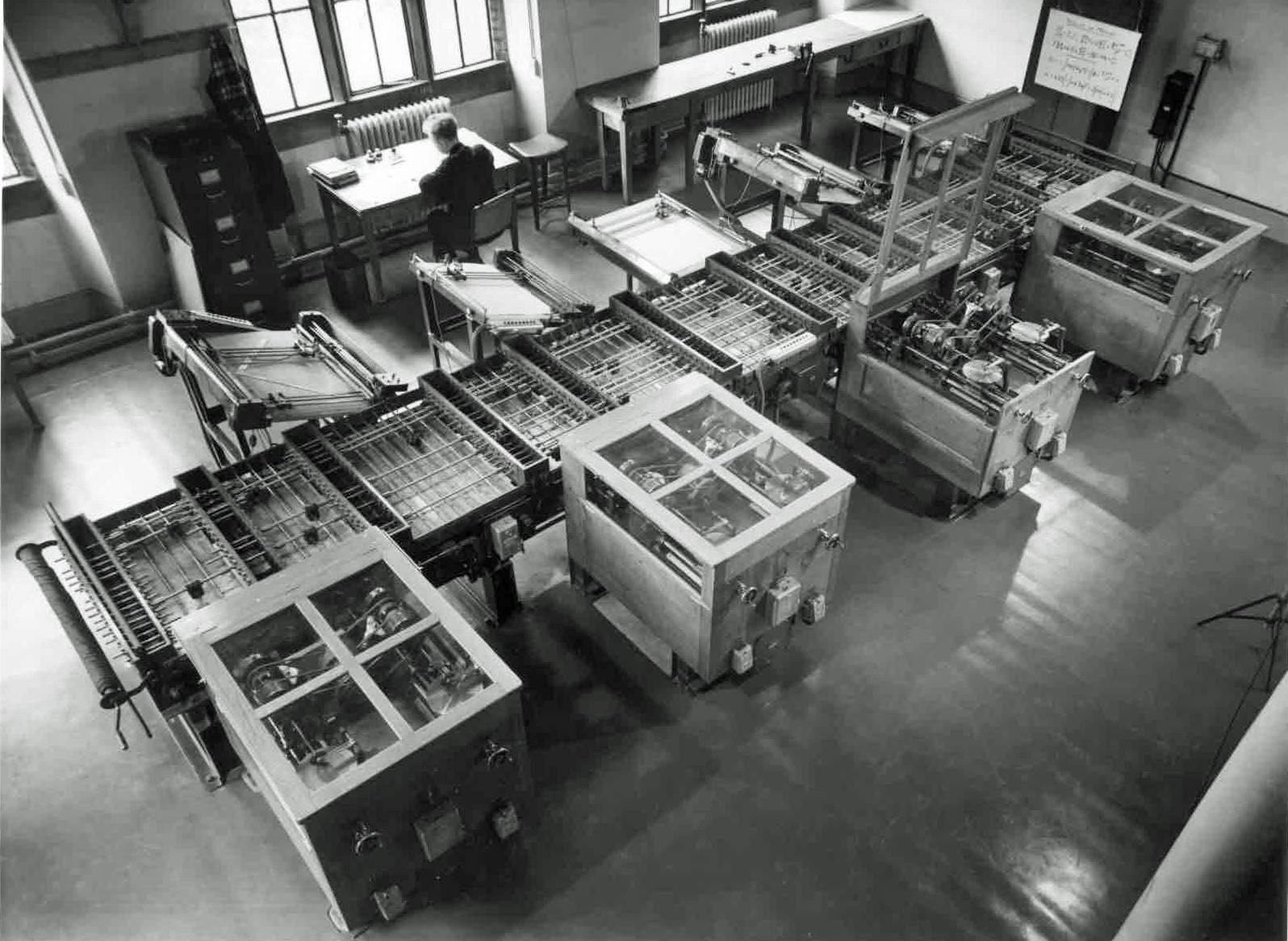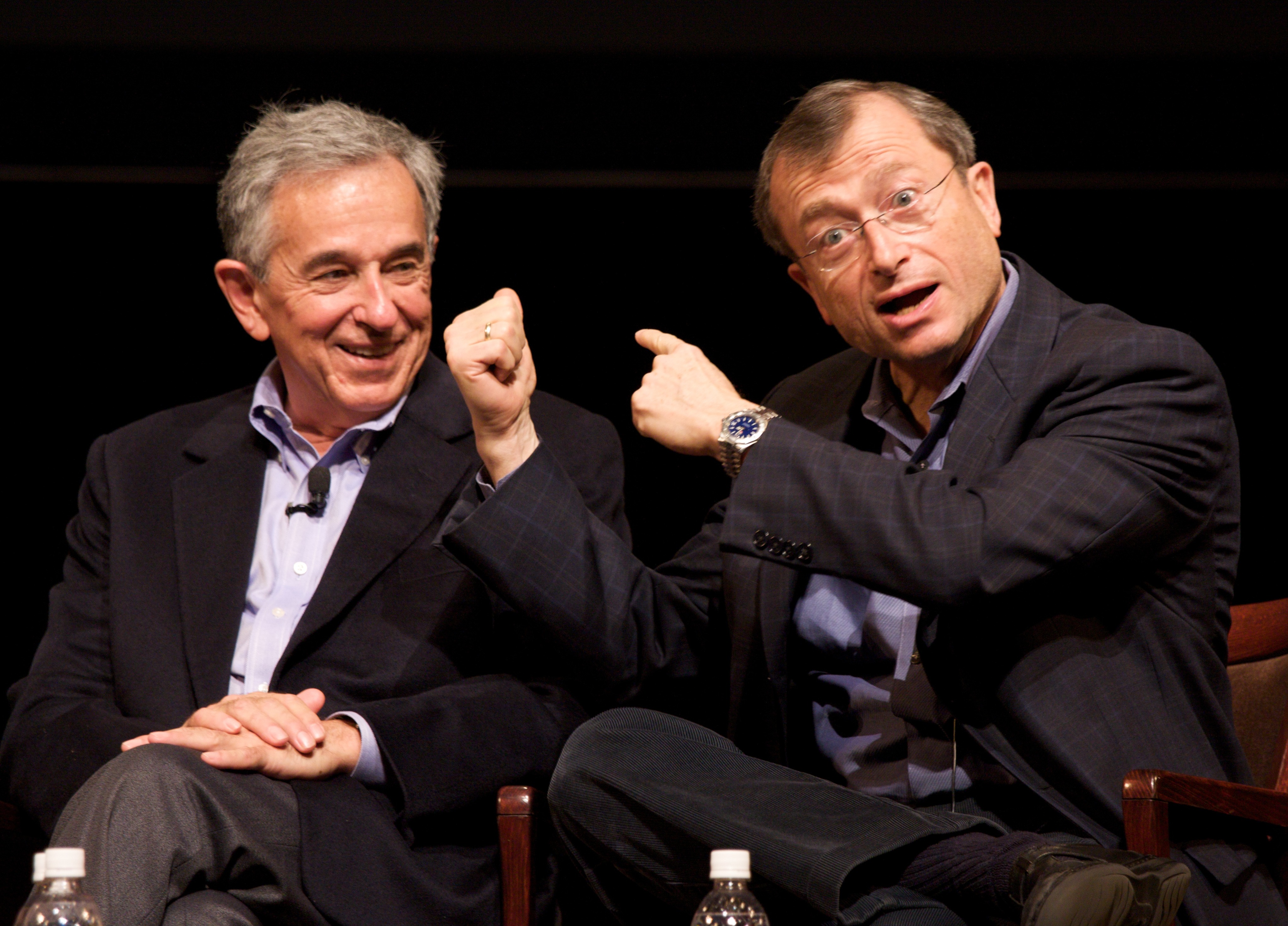|
Memex
Memex is a hypothetical electromechanical device for interacting with microform documents and described in Vannevar Bush's 1945 article "As We May Think". Bush envisioned the memex as a device in which individuals would compress and store all of their books, records, and communications, "mechanized so that it may be consulted with exceeding speed and flexibility". The individual was supposed to use the memex as an automatic personal filing system, making the memex "an enlarged intimate supplement to his memory".. The name memex is a portmanteau of ''mem''ory and ''ex''pansion. The concept of the memex influenced the development of early hypertext systems, eventually leading to the creation of the World Wide Web, and personal knowledge base software. The hypothetical implementation depicted by Bush for the purpose of concrete illustration was based upon a document bookmark list of static microfilm pages and lacked a true hypertext system, where parts of pages would have internal ... [...More Info...] [...Related Items...] OR: [Wikipedia] [Google] [Baidu] |
Vannevar Bush
Vannevar Bush ( ; March 11, 1890 – June 28, 1974) was an American engineer, inventor and science administrator, who during World War II headed the U.S. Office of Scientific Research and Development (OSRD), through which almost all wartime military R&D was carried out, including important developments in radar and the initiation and early administration of the Manhattan Project. He emphasized the importance of scientific research to national security and economic well-being, and was chiefly responsible for the movement that led to the creation of the National Science Foundation. Bush joined the Department of Electrical Engineering at Massachusetts Institute of Technology (MIT) in 1919, and founded the company that became the Raytheon Company in 1922. Bush became vice president of MIT and dean of the MIT School of Engineering in 1932, and president of the Carnegie Institution of Washington in 1938. During his career, Bush patented a string of his own inventions. He is k ... [...More Info...] [...Related Items...] OR: [Wikipedia] [Google] [Baidu] |
As We May Think
"As We May Think" is a 1945 essay by Vannevar Bush which has been described as visionary and influential, anticipating many aspects of information society. It was first published in ''The Atlantic'' in July 1945 and republished in an abridged version in September 1945—before and after the atomic bombings of Hiroshima and Nagasaki. Bush expresses his concern for the direction of scientific efforts toward destruction, rather than understanding, and explicates a desire for a sort of collective memory machine with his concept of the memex that would make knowledge more accessible, believing that it would help fix these problems. Through this machine, Bush hoped to transform an information explosion into a knowledge explosion. Concept creation The article was a reworked and expanded version of Bush's essay "Mechanization and the Record" (1939). Here, he described a machine that would combine lower level technologies to achieve a higher level of organized knowledge (like huma ... [...More Info...] [...Related Items...] OR: [Wikipedia] [Google] [Baidu] |
Personal Knowledge Base
A personal knowledge base (PKB) is an electronic tool used to express, capture, and later retrieve the personal knowledge of an individual. It differs from a traditional database in that it contains subjective material particular to the owner, that others may not agree with nor care about. Importantly, a PKB consists primarily of knowledge, rather than information; in other words, it is not a collection of documents or other sources an individual has encountered, but rather an expression of the distilled knowledge the owner has extracted from those sources or from elsewhere.See also the dissertation of Max Völkel, which examined personal knowledge data models, and proposed a meta-model called "Conceptual Data Structures": The term was mentioned as early as the 1980s, but the term came to prominence in the 2000s when it was described at length in publications by computer scientist Stephen Davies and colleagues, who compared PKBs on a number of different dimensions, the most impo ... [...More Info...] [...Related Items...] OR: [Wikipedia] [Google] [Baidu] |
Computer Mouse
A computer mouse (plural mice, sometimes mouses) is a hand-held pointing device that detects two-dimensional motion relative to a surface. This motion is typically translated into the motion of a pointer on a display, which allows a smooth control of the graphical user interface of a computer. The first public demonstration of a mouse controlling a computer system was in 1968. Mice originally used two separate wheels to track movement across a surface: one in the X-dimension and one in the Y. Later, the standard design shifted to utilize a ball rolling on a surface to detect motion. Most modern mice use optical sensors that have no moving parts. Though originally all mice were connected to a computer by a cable, many modern mice are cordless, relying on short-range radio communication with the connected system. In addition to moving a cursor, computer mice have one or more buttons to allow operations such as the selection of a menu item on a display. Mice often also featur ... [...More Info...] [...Related Items...] OR: [Wikipedia] [Google] [Baidu] |
Andries Van Dam
Andries "Andy" van Dam (born December 8, 1938) is a Dutch-American professor of computer science and former vice-president for research at Brown University in Providence, Rhode Island. Together with Ted Nelson he contributed to the first hypertext system, Hypertext Editing System (HES) in the late 1960s. He co-authored '' Computer Graphics: Principles and Practice'' along with J.D. Foley, S.K. Feiner, and John Hughes. He also co-founded the precursor of today's ACM SIGGRAPH conference. Van Dam serves on several technical boards and committees. He teaches an introductory course in computer science and courses in computer graphics at Brown University. Van Dam received his B.S. degree with Honors in Engineering Sciences from Swarthmore College in 1960 and his M.S. and Ph.D. from the University of Pennsylvania in 1963 and 1966, respectively. Students Van Dam has mentored undergraduates, other scholars, and practitioners in hypertext and computer graphics. One of his st ... [...More Info...] [...Related Items...] OR: [Wikipedia] [Google] [Baidu] |
Hypertext
Hypertext is text displayed on a computer display or other electronic devices with references ( hyperlinks) to other text that the reader can immediately access. Hypertext documents are interconnected by hyperlinks, which are typically activated by a mouse click, keypress set, or screen touch. Apart from text, the term "hypertext" is also sometimes used to describe tables, images, and other presentational content formats with integrated hyperlinks. Hypertext is one of the key underlying concepts of the World Wide Web, where Web pages are often written in the Hypertext Markup Language (HTML). As implemented on the Web, hypertext enables the easy-to-use publication of information over the Internet. Etymology The English prefix "hyper-" comes from the Greek prefix "ὑπερ-" and means "over" or "beyond"; it has a common origin with the prefix "super-" which comes from Latin. It signifies the overcoming of the previous linear constraints of written text. The term ... [...More Info...] [...Related Items...] OR: [Wikipedia] [Google] [Baidu] |
Hypertext Editing System
The Hypertext Editing System, or HES, was an early hypertext research project conducted at Brown University in 1967 by Andries van Dam, Ted Nelson, and several Brown students.Brown University Department of Computer Science. (23 May 2019)A Half-Century of Hypertext at Brown It was the first hypertext system available on commercial equipment that novices could use. HES organized data into two main types: links and branching text. The branching text could automatically be arranged into menus, and a point within a given area could also have an assigned name, called a label, and be accessed later by that name from the screen. Although HES pioneered many modern hypertext concepts, its emphasis was on text formatting and printing. HES required an IBM 2250 display console and a large memory partition on Brown's IBM System/360 Model 50 campus mainframe computer which limited its use: "Although it was shared with others, it was a multi-million-dollar piece of technology housed in a large ... [...More Info...] [...Related Items...] OR: [Wikipedia] [Google] [Baidu] |
Electronic Visual Display
An electronic visual display, informally a screen, is a display device for presentation of images, text, or video transmitted electronically, without producing a permanent record. Electronic visual displays include television sets, computer monitors, and digital signage. By the above definition, an overhead projector (along with screen onto which the text, images, or video is projected) could reasonably be considered an electronic visual display since it is a display device for the presentation of an images, plain text, or video transmitted electronically without producing a permanent record. They are also ubiquitous in mobile computing applications like tablet computers, smartphones, and information appliances. Types These are the technologies used to create the various displays in use today. * Electroluminescent (EL) display * Liquid crystal (LC) display with Light-emitting diode (LED)-backlit Liquid crystal (LC) display * Light-emitting diode (LED) display ** OLED display ... [...More Info...] [...Related Items...] OR: [Wikipedia] [Google] [Baidu] |
Pointing Device
A pointing device is a human interface device that allows a user to input spatial (i.e., continuous and multi-dimensional) data to a computer. CAD systems and graphical user interfaces (GUI) allow the user to control and provide data to the computer using physical gestures by moving a hand-held mouse or similar device across the surface of the physical desktop and activating switches on the mouse. Movements of the pointing device are echoed on the screen by movements of the pointer (or cursor) and other visual changes. Common gestures are point and click and drag and drop. While the most common pointing device by far is the mouse, many more devices have been developed. However, the term ''mouse'' is commonly used as a metaphor for devices that move a computer cursor. Fitts's law can be used to predict the speed with which users can use a pointing device. Classification To classify several pointing devices, a certain number of features can be considered. For ex ... [...More Info...] [...Related Items...] OR: [Wikipedia] [Google] [Baidu] |
Ted Nelson
Theodor Holm Nelson (born June 17, 1937) is an American pioneer of information technology, philosopher, and sociologist. He coined the terms ''hypertext'' and '' hypermedia'' in 1963 and published them in 1965. Nelson coined the terms '' transclusion'', ''virtuality'', and ''intertwingularity'' (in ''Literary Machines''). According to a 1997 ''Forbes'' profile, Nelson "sees himself as a literary romantic, like a Cyrano de Bergerac, or 'the Orson Welles of software'." Early life and education Nelson is the son of Emmy Award-winning director Ralph Nelson and Academy Award-winning actress Celeste Holm. His parents' marriage was brief and he was mostly raised by his grandparents, first in Chicago and later in Greenwich Village. Nelson earned a B.A. in philosophy from Swarthmore College in 1959. While there, he made an experimental humorous student film, ''The Epiphany of Slocum Furlow'', in which the titular hero discovers the meaning of life. His contemporary at the college, ... [...More Info...] [...Related Items...] OR: [Wikipedia] [Google] [Baidu] |




